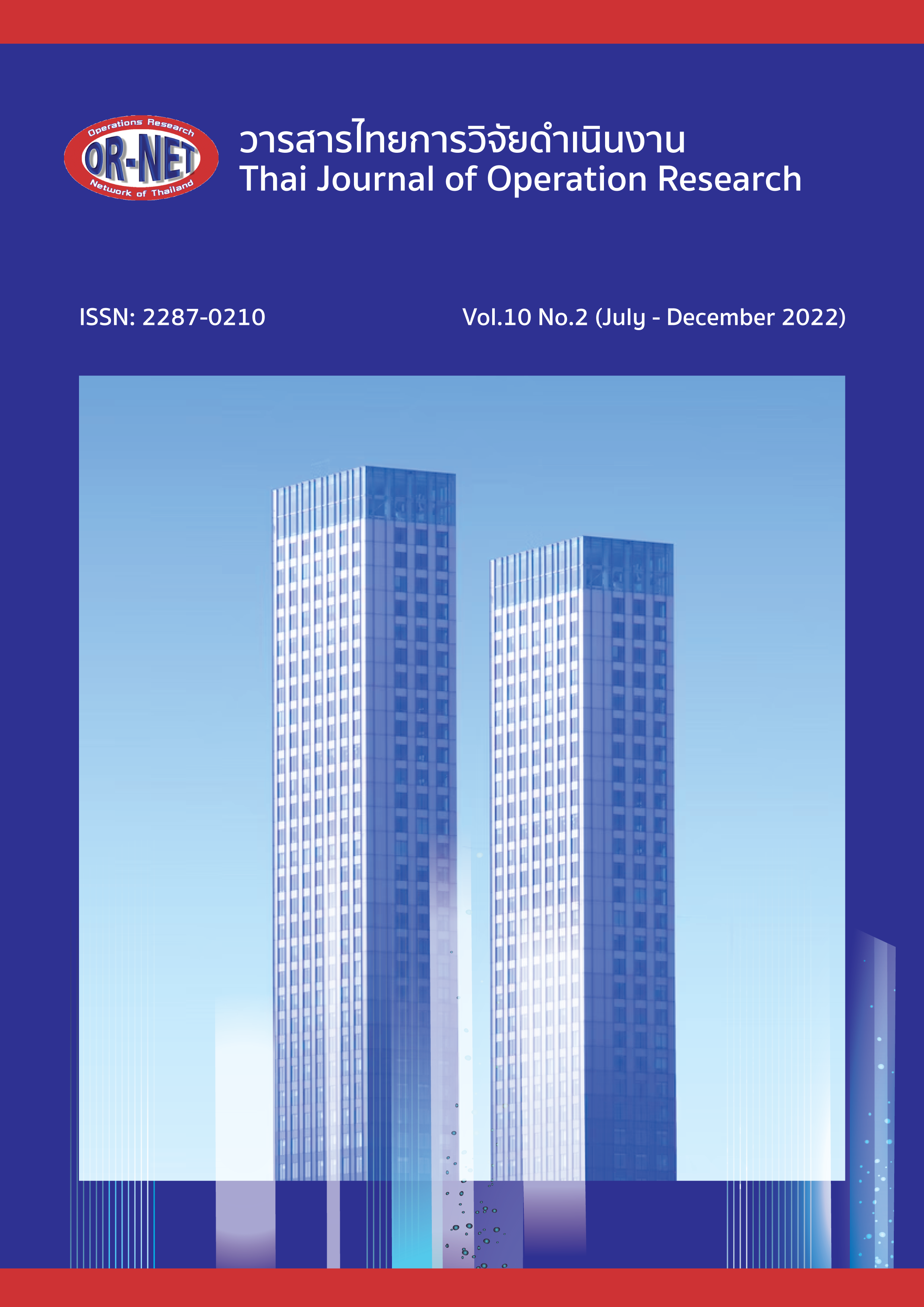Analysis of Automated People Mover Operations at Suvarnabhumi Airport
Keywords:
automated people mover, timetable, simulation, airport transit, passengersAbstract
The Automated People Mover (APM) is popular transportation technology used within airports. It operates in a similar way to a metro system, with operations managed by the Operation Control Center (OCC). However, APM has specific characteristics as it has rubber wheels with a central guided rail running on a concrete surface. This allows for shorter braking distances compared with a typical rail track. In the Suvarnabhumi airport expansion project, APM is used to transport passengers between the North Main Terminal Building (NMTB) and satellite concourse 1 (SAT-1) on the airside. APM operations must be planned in accordance with the predicted number of passengers in each period under the rail infrastructure to achieve maximum efficiency. This research applies simulation modelling to the APM operations with Communications-Based Train Control (CBTC) to analyze and evaluate the service capability within Suvarnabhumi airport. The system consists of two loops. The results of the simulation show that the minimum possible headway on each loop is often limited by the bottleneck at the entry-exit of each station. During off-peak times, trains can operate at a headway of 400-450 seconds with a dwell time of 70-95 seconds and 1 train is enough. During peak times, trains can operate at a headway of 200-212 seconds with a dwell time of 70-90 seconds. At these times, 2 trains are required for services. Both periods can be operated on a single loop. However, during surged peak times there are more passengers. APM operations on a single loop cannot handle the increased passenger numbers. Therefore, the determination of headway is 250 seconds on both loops by allowing trains to be released alternately with a dwell time of 84-125 seconds. In this period, 4 trains are required for services. Simulation modelling can modify parameters quickly to show the different effects in the system with the limited rail infrastructure. It can show potential operating problems.
References
Airport Cooperative Research Program, Guidebook for Planning and Implementing Automated People Mover Systems at Airports Report 37, United States: Transportation Research Board, 2012.
F. S. De, G. Medeossi and G. Montanaro, “Improving the Microscopic Simulation of Railway Networks,” in 16th International Conference on Railway Engineering Design & Operation, Portugal, 2018.
วเรศรา วีระวัฒน์ และ ฐานันดร บุญไชย, “การใช้แบบจำลองในการวิเคราะห์รูปแบบการให้บริการเดินรถไฟฟ้าขนส่งมวลชนในเมือง,” Thai Journal of Science and Technology., ปีที่ 7, ฉบับที่ 3, น. 293-306, 2561.
H. Hrvoje, I. Talan and B. Michaljevic, “Improvement of suburban railway services by infrastructure and timetable modifications based on simulation modelling,” Transport Problems., vol. 13, no. 3, pp. 15-27, 2018.
P. Hamed and P. Lautala, “Hybrid simulation approach for improving railway capacity and train schedules,” Journal of Rail Transport Planning & Management., vol. 5, no. 4, pp. 211-224, 2015.
A. Nash, U. Weidmann, S. Bollinger, M. Luethi, and S. Buchmueller, “Increasing schedule reliability on the S-Bahn in Zurich,” Transportation Research Record., vol. 1955, no. 1, pp. 17-25, 2006.
S. Hans, “Evaluation of Single Track Timetables using Simulation,” in ASME/IEEE Joint Rail Conference, New York, 2014.
H. N. Koutsopoulos and Z. Wang, “Simulation of urban rail operations: application framework,” Transportation research record., vol. 2006, no. 1, pp. 84-91, 2007.
C. Zhen and B. M. Han, “Simulation study based on opentrack on carrying capacity in district of Beijing-Shanghai high-speed railway,” Applied Mechanics and Materials., vol. 505, pp. 567-570, 2014.
W. Weerawat, L. Samitiwantikul and R. Torpanya, “Operational challenges of the Bangkok Airport Rail Link,” Urban Rail Transit., vol. 6, no. 1, pp. 42-55, 2020.
I. Ljubaja, M. Mikulčića and T. J. Mlinarića, “Possibility of increasing the railway capacity of the R106 regional line by using a simulation tool,” Transportation Research Procedia., vol. 4, pp. 137-144, 2020.
A. Jelena and A. Schöbel, “OpenTrack–a tool for simulation of railway networks,” Mechanics Transport Communications., vol. 15, no.3, pp. 32-40, 2017.
Downloads
Published
How to Cite
Issue
Section
License

This work is licensed under a Creative Commons Attribution-NonCommercial-NoDerivatives 4.0 International License.




